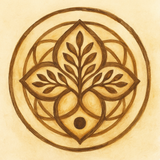Ayurveda and the Mind-Body Connection: The Path to Inner Harmony

Ayurveda’s most profound contribution to modern wellness may be its deep and unwavering focus on the interconnectedness of the mind, body, and spirit. Unlike conventional medicine, which has historically treated these as separate entities, Ayurveda sees them as an inseparable trinity, with the state of one directly influencing the others. This holistic perspective is gaining immense traction as modern science increasingly validates the powerful impact of mental and emotional states on physical health.
The Tripartite Mind: Sattva, Rajas, and Tamas
Just as the body is governed by the three doshas—Vata, Pitta, and Kapha—the mind is understood through three fundamental qualities or gunas: Sattva, Rajas, and Tamas. These gunas are not static but are constantly in flux, influencing our thoughts, emotions, and behaviors.
- Sattva: Represents purity, harmony, and balance. A Sattvic mind is characterized by clarity, calmness, compassion, and a thirst for knowledge. It is the ideal state for mental health, allowing for higher consciousness and emotional resilience. Practices that increase Sattva include meditation, mindfulness, a vegetarian diet, and a lifestyle aligned with nature.
- Rajas: Represents activity, passion, and ambition. While Rajas is necessary for creation and drive, an excess of it can lead to restlessness, desire, stress, anger, and anxiety. A Rajasic mind is constantly seeking and striving, often at the cost of peace.
- Tamas: Represents inertia, darkness, and ignorance. A Tamasic mind is characterized by lethargy, dullness, depression, and a lack of motivation. It is the opposite of a Sattvic mind, leading to a disconnection from one's true self.
Ayurveda teaches that the journey to mental well-being is about cultivating Sattva while minimizing Rajas and Tamas. The goal is not to eliminate Rajas and Tamas entirely, as they have their functions, but to bring them into a state of balance where Sattva can dominate.
Emotional Imbalances and Their Physical Manifestations
Ayurveda provides a clear framework for understanding how emotional states can manifest as physical diseases. For instance:
- Excessive Vata can lead to fear, anxiety, and worry, which can physically manifest as nervous system disorders, insomnia, and constipation.
- Imbalanced Pitta often results in anger, frustration, and irritability, which can cause inflammatory conditions like ulcers, acid reflux, and skin rashes.
- An excess of Kapha can lead to lethargy, attachment, and greed, which may manifest as weight gain, congestion, and depression.
By recognizing these connections, an Ayurvedic practitioner doesn't just treat the physical symptom; they address the underlying emotional and mental imbalance. The approach is deeply holistic, treating the root cause rather than just the visible effects.
Practical Tools for Mind-Body Harmony
Ayurveda offers a treasure trove of practical tools to cultivate a Sattvic mind and promote inner harmony.
- Meditation and Pranayama (Breathing Exercises): These are considered essential for calming the nervous system, reducing mental chatter, and increasing the flow of prana (life force).
- Yoga: The practice of asanas (postures) not only strengthens the body but also releases stored emotional tension and improves the mind-body connection.
- Herbal Remedies: Certain herbs, known as medhya rasayanas (rejuvenators for the mind), are prescribed to enhance cognitive function and emotional balance. Brahmi and Gotu Kola are prime examples, traditionally used to improve memory and calm the mind.
- Sensory Therapies: Ayurveda uses sound, smell, and sight to restore balance. Aromatherapy with essential oils like lavender and sandalwood can calm a Vata imbalance, while rose and jasmine can cool a fiery Pitta mind.
In conclusion, Ayurveda’s mind-body approach is not an abstract concept but a practical, actionable science. It offers a clear and compassionate roadmap for navigating the complexities of modern life by teaching us that true health is an integrated state of physical vitality and mental peace. By tending to our emotional and mental well-being with the same care we give to our physical health, we can unlock a state of profound inner harmony and lead a life of balance and resilience





